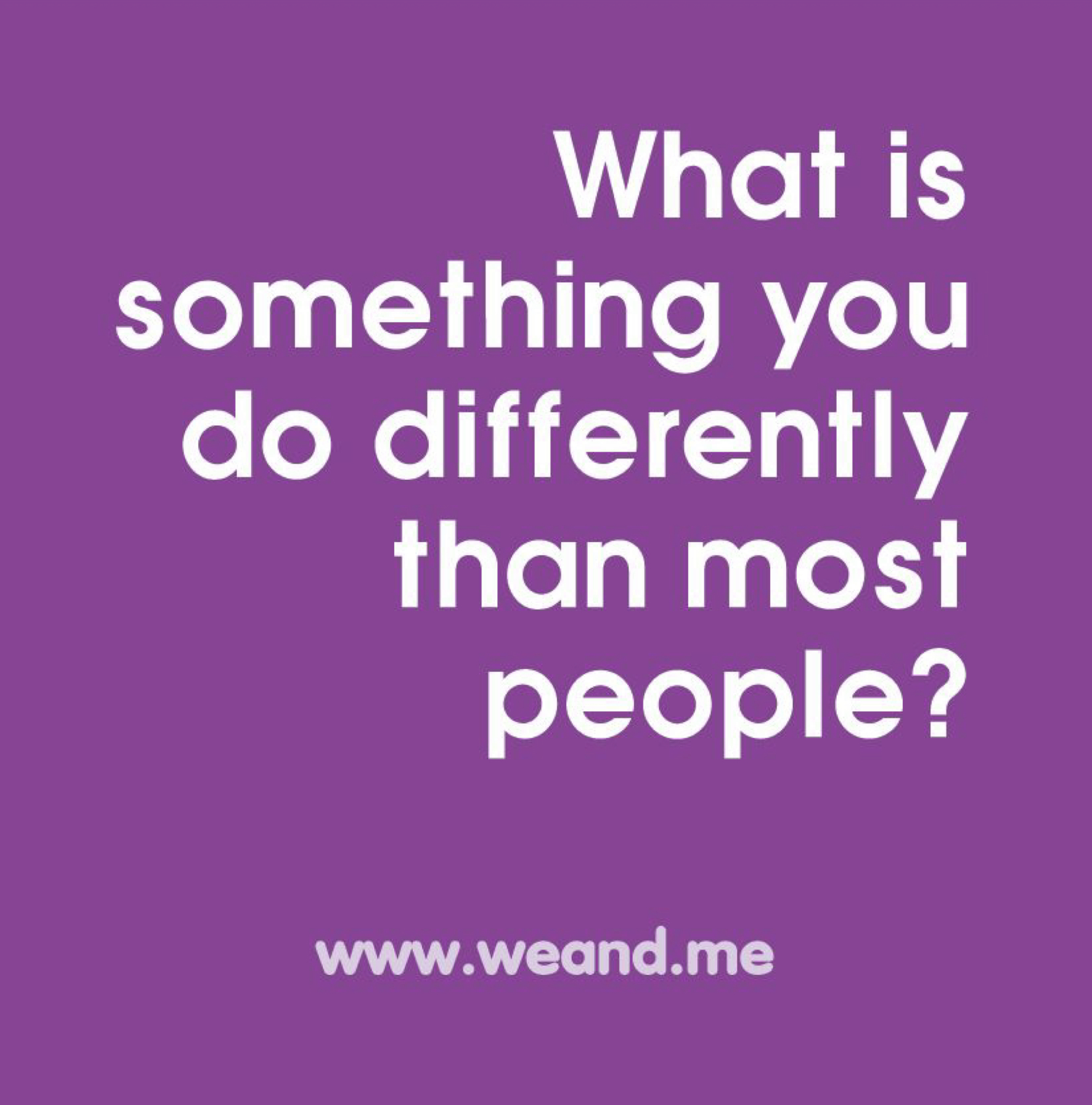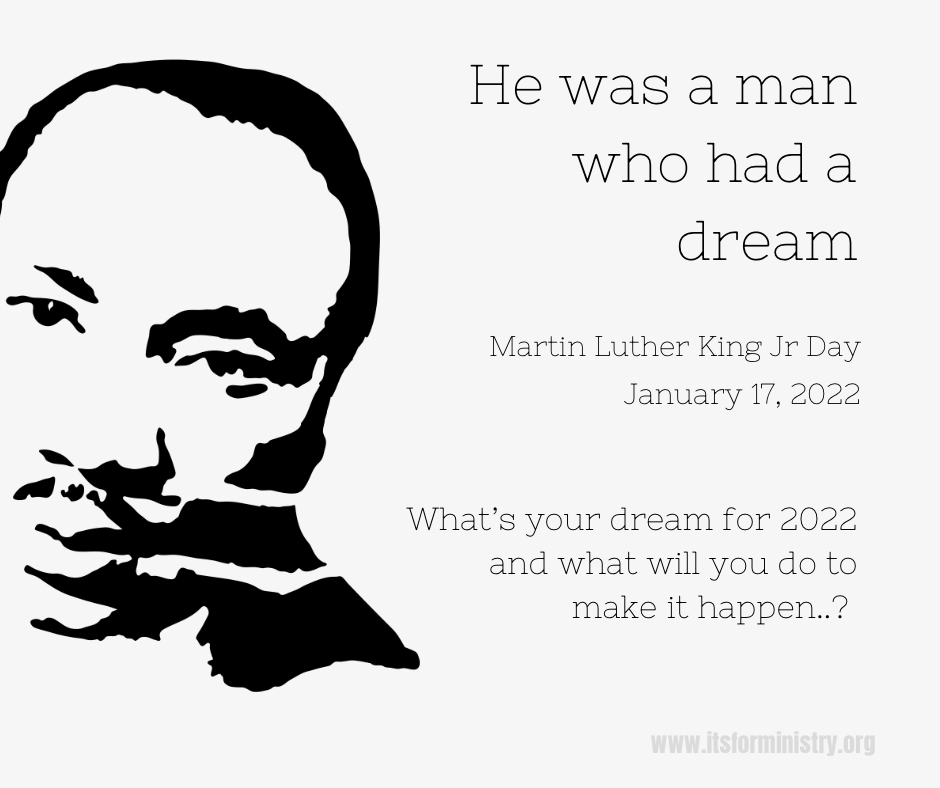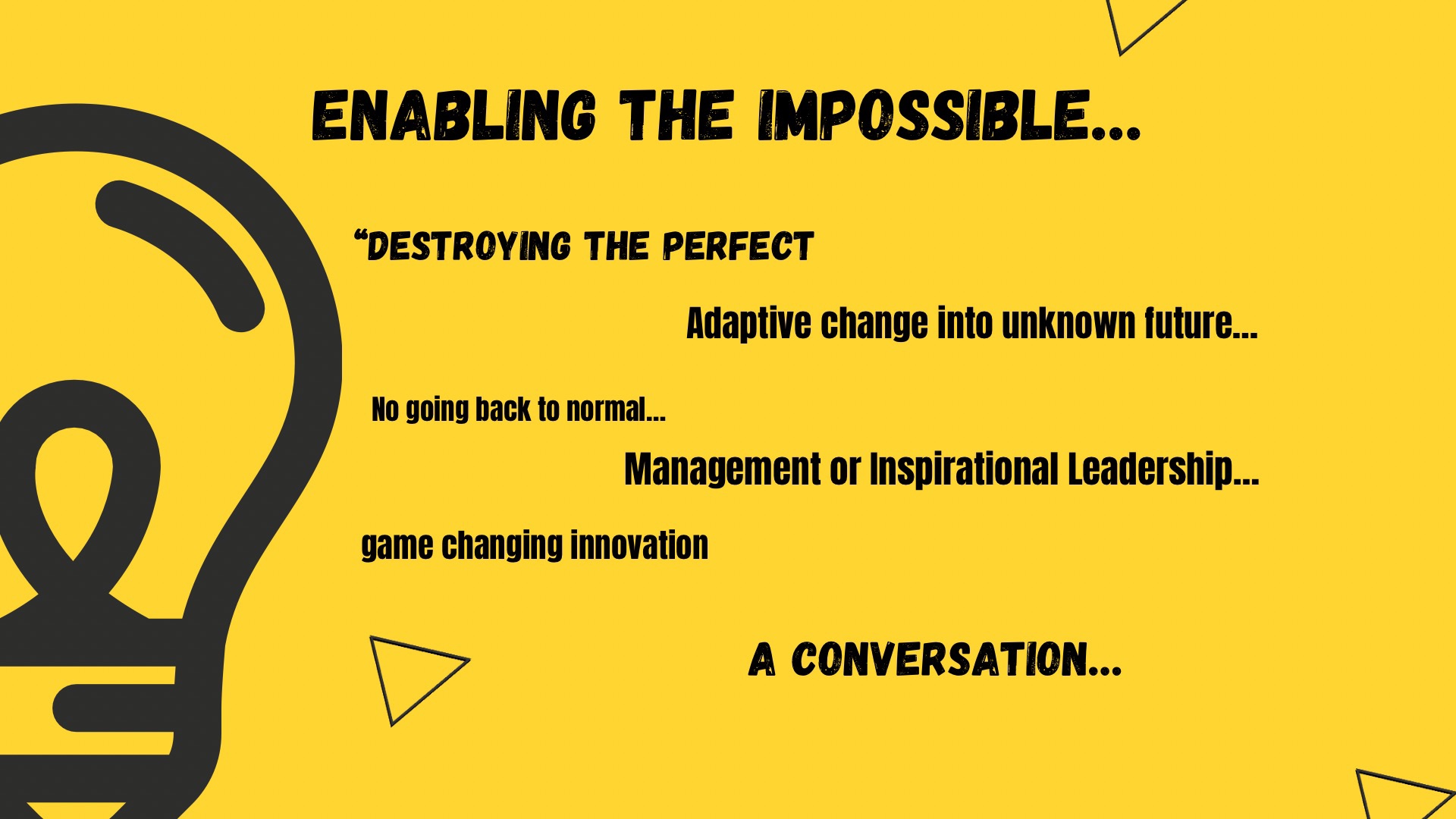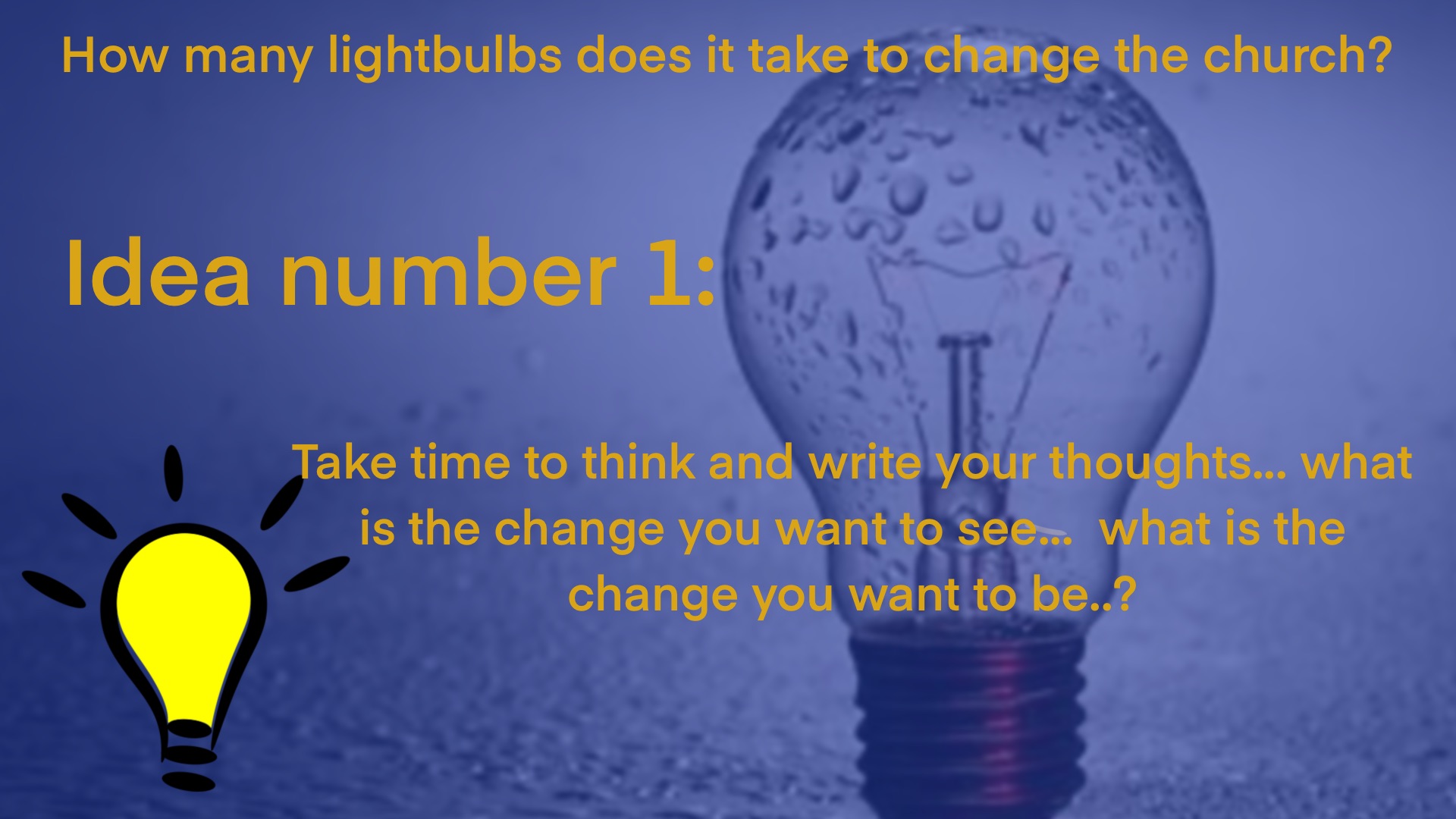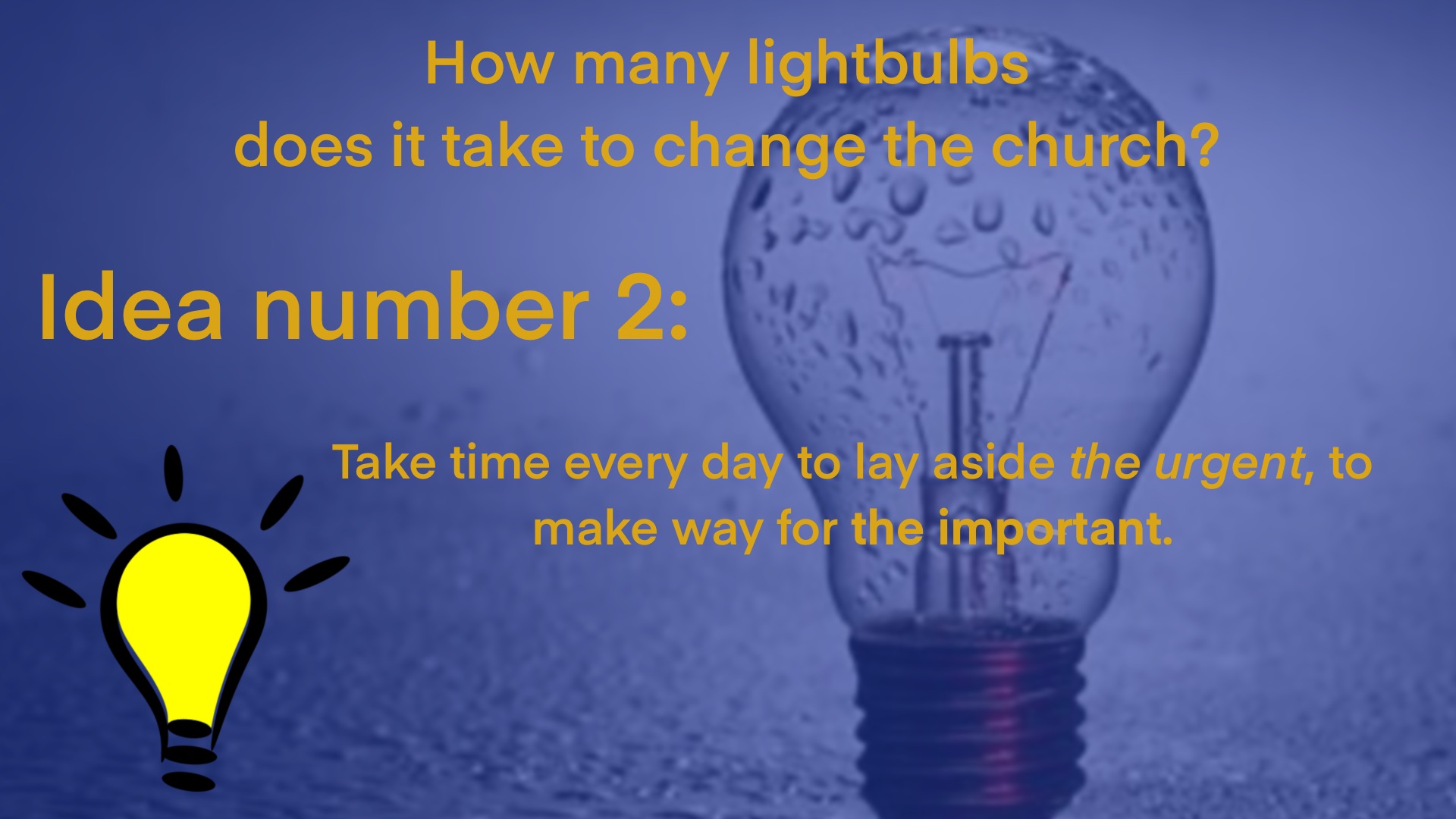What if every meeting you ran led to action, alignment, and real progress? I know Andy Gilbert, and have attended some of his GoMadThinking Training. In the linked article he challenges us to use better questions, before and during meetings… So much of what he says translates well in our Church context… Questions require an answer, and when we see a question our brains cannot do other than consider an…
Read MoreToast on Beans
I recently came across weand.me which has some wonderful ideas about how to make online meetings better with good questions, and creating involvement and engagement. There are some freely downloadable resources featuring ice-breaker type questions – along with the more deep and meaningful… I had posted an example on the ITsForMinistry FaceBook page: It generated a bit of discussion – with ideas about how to do ’beans on toast’ differently…
Read MoreI have a dream…
Martin Luther King Jr Day is marked on the Third Monday January – close to his birthdate 15 Jan 1929 He famously said, “I have a dream…” Not, “I have a plan… an idea… a project… With the emotion of a dream he led others to action, changed beliefs, ideas, and plans… but it all began with a dream… What are your dreams… your hopes… for the World, the Church,…
Read MoreEnabling the Impossible
It’s only impossible until it’s done”, words attributed to many including Winston Churchill and Nelson Mandela. On a Thursday morning in January 2022, 24 ministers, elders and others from within the ITsForMinistry Facebook group meet on Zoom for a Conversation triggered by some of Seth Godin’s thinking around Leadership always being qualified by ‘this might not work’.The Seth Godin’s Video which all had watched prior to the conversation was this…
Read MoreTake time to reflect.
Socrates is attributed with saying “The unexamined life is not worth living” And more recently Charles Handy quotes: “It’s like the Irishman Frances Crick once said: ‘How do I know what I think until I hear what I say?’” Do you take time to listen to yourself..? To reflect and ponder what you really believe and think about life, the universe, faith, God, yourself and everything…
Read MoreMake time for the Important
Stephen Covey spoke of ‘First things First’, important things first. He borrowed Eisenhower’s Urgent/Important Matrix Michael Heppell and others speak of allocating time to the categories: ‘Me’, ‘Key’, ‘stuff’ – where ‘Key’ projects are the mission critical important ones… yet how often all the urgent stuff pushes out the important. ‘Me’ times – are, well it says it on the tin doesn’t it – times for YOU – and that’s…
Read MoreChange 4,5,6
You can only change 3 things: structures, policies and mindsets… but you have to change them all… and mindset will always be the hardest! To effect those changes, you need to do three things… I call them steps 4, 5, 6 in honour and recognition of the change that has already happened! Change is all around and change is hard… particularly within the Church context, where despite a core belief…
Read MoreKipling Questions
I keep six honest serving men,they taught me all I knew.Their names are What and Why and Whenand How and Where and Whofrom The Elephant’s Child, Rudyard Kipling Six Questions to ask about anything and everything? Use them to brainstorm on your own or with a group What? is it, could happen, would happen if… Why? Why, Why is, does it have to be… When? is the right time, do…
Read MoreGnim rots niarb
It’s a silent G – pronounced ‘nim rots ny-arb’ No it’s not Gaelic! It’s Brainstorming reversed! Instead of brainstorming around what you want to achieve… consider what you would do to ensure failure! It really works well – people will talk much more freely because it’s fun and light hearted… it’s actually really creative and generative. eg: how to ensure poor engagement with Christmas services. Don’t advertise, tell everyone the…
Read More6 important things to do tomorrow
What are the six most important things you are going to do tomorrow? The Ivy Lee Method 100 years ago Ivy Lee was a productivity consultant- before that was really a thing! He shared some advice which many still use today. You too can apply the Ivy Lee method… Before you finish work or go to bed today, write down the 6 most important things that you will do tomorrow.…
Read More